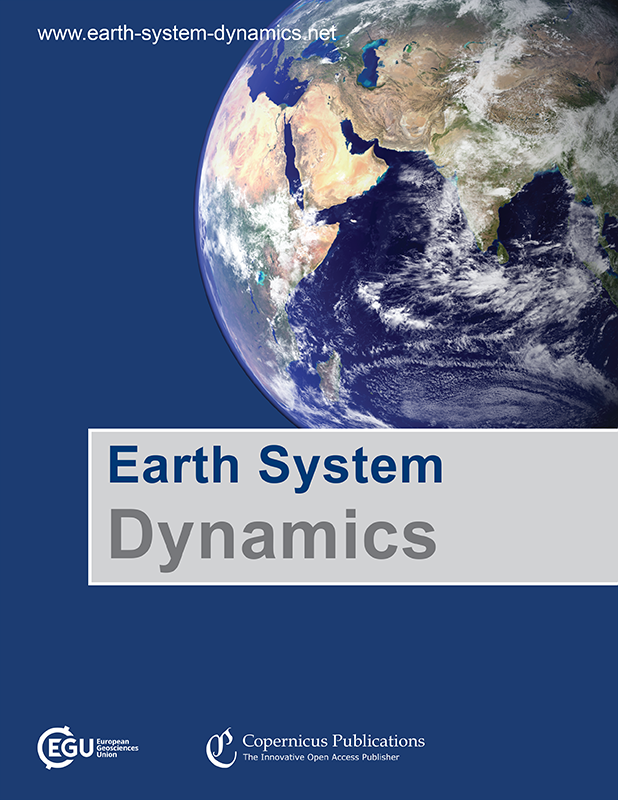Future water storage changes over the Mediterranean, Middle East, and North Africa in response to global warming and stratospheric aerosol intervention
IF 7.9
2区 地球科学
Q1 GEOSCIENCES, MULTIDISCIPLINARY
引用次数: 0
Abstract
Abstract. Water storage plays a profound role in the lives of people across the Middle East and North Africa (MENA) as it is the most water-stressed region worldwide. The lands around the Caspian and Mediterranean seas are simulated to be very sensitive to future climate warming. Available water capacity depends on hydroclimate variables such as temperature and precipitation that will depend on socioeconomic pathways and changes in climate. This work explores changes in both the mean and extreme terrestrial water storage (TWS) under an unmitigated greenhouse gas (GHG) scenario (SSP5-8.5) and stratospheric aerosol intervention (SAI) designed to offset GHG-induced warming above 1.5 ∘C and compares both with historical period simulations. Both mean TWS and extreme TWS are projected to significantly decrease under SSP5-8.5 over the domain, except for the Arabian Peninsula, particularly in the wetter lands around the Caspian and Mediterranean seas. Relative to global warming, SAI partially ameliorates the decreased mean TWS in the wet regions, while it has no significant effect on the increased TWS in drier lands. In the entire domain studied, the mean TWS is larger under SAI than pure GHG forcing, mainly due to the significant cooling and, in turn, a substantial decrease in evapotranspiration under SAI relative to SSP5-8.5. Changes in extreme water storage excursions under global warming are reduced by SAI. Extreme TWS under both future climate scenarios is larger than throughout the historical period across Iran, Iraq, and the Arabian Peninsula, but the response of the more continental eastern North Africa hyper-arid climate is different from the neighboring dry lands. In the latter case, we note a reduction in the mean TWS trend under both GHG and SAI scenarios, with extreme TWS values also showing a decline compared to historical conditions.全球变暖和平流层气溶胶干预对地中海、中东和北非未来蓄水量变化的影响
摘要中东和北非(MENA)是全球水资源最为紧张的地区,因此蓄水对该地区人民的生活影响深远。根据模拟,里海和地中海周围的陆地对未来气候变暖非常敏感。可用水量取决于温度和降水量等水文气候变量,而这些变量将取决于社会经济发展路径和气候变化。这项研究探讨了在未减缓温室气体(GHG)情景(SSP5-8.5)和平流层气溶胶干预(SAI)的情况下,平均陆地储水量(TWS)和极端陆地储水量(TWS)的变化,旨在抵消 GHG 引起的超过 1.5 ∘C 的升温,并将两者与历史时期的模拟结果进行比较。预计在 SSP5-8.5 条件下,除阿拉伯半岛外,全域的平均 TWS 和极端 TWS 都将显著下降,尤其是在里海和地中海周围较湿润的地区。相对于全球变暖,SAI 部分改善了潮湿地区平均 TWS 的下降,而对干旱地区 TWS 的增加没有显著影响。在整个研究区域,SAI 条件下的平均 TWS 要大于纯温室气体强迫,这主要是由于相对于 SSP5-8.5,SAI 会显著降温,进而导致蒸散量大幅下降。SAI减少了全球变暖下极端蓄水偏差的变化。在这两种未来气候情景下,伊朗、伊拉克和阿拉伯半岛的极端 TWS 都大于历史同期,但北非东部大陆性超干旱气候的反应与邻近旱地不同。就后者而言,我们注意到在温室气体和 SAI 两种情景下,平均 TWS 趋势都有所下降,与历史条件相比,极端 TWS 值也有所下降。
本文章由计算机程序翻译,如有差异,请以英文原文为准。
求助全文
约1分钟内获得全文
求助全文
来源期刊

Earth System Dynamics
GEOSCIENCES, MULTIDISCIPLINARY-
CiteScore
13.20
自引率
5.50%
发文量
61
审稿时长
36 weeks
期刊介绍:
Earth System Dynamics (ESD) is a not-for-profit international scientific journal committed to publishing and facilitating public discussion on interdisciplinary studies focusing on the Earth system and global change. The journal explores the intricate interactions among Earth's component systems, including the atmosphere, cryosphere, hydrosphere, oceans, pedosphere, lithosphere, and the influence of life and human activity. ESD welcomes contributions that delve into these interactions, their conceptualization, modeling, quantification, predictions of global change impacts, and their implications for Earth's habitability, humanity, and the future dynamics in the Anthropocene.
 求助内容:
求助内容: 应助结果提醒方式:
应助结果提醒方式:


